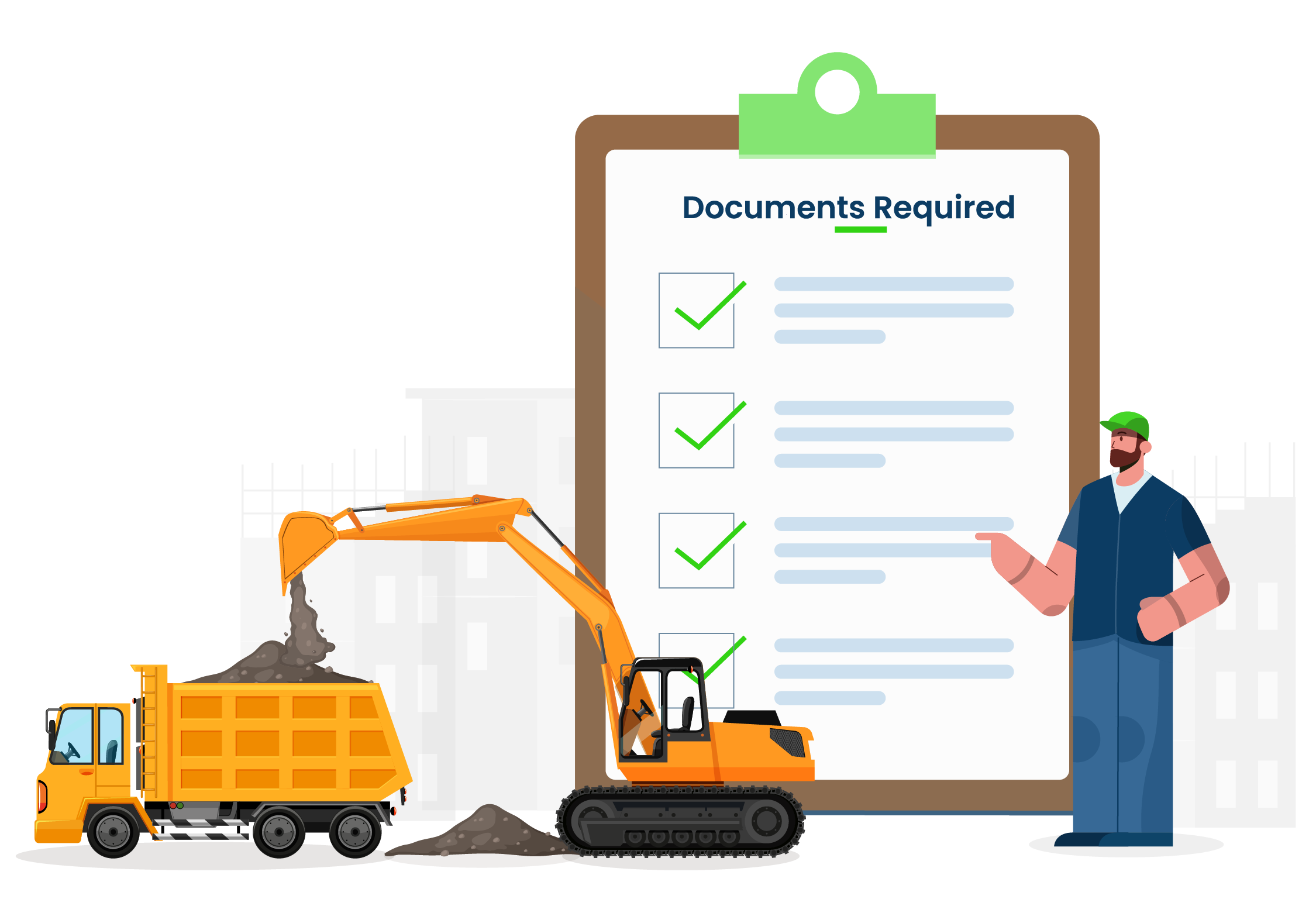Updated on December 20, 2025 10:24:51 AM
Acquiring Construction and Demolition Waste Management Authorization is crucial because Sikkim is one of the tiny but bio-diverse states in the northeastern region of India which is increasingly struggling to handle C&D waste that emanates from burgeoning pace of urbanization and construction activities. Characterized by an enhanced physical environment, variety of habitats and ecosystems, and an environment that can only barely cope with the strain that development puts on it, construction activities in the state have adversely affected the outlook and balance of natural environments through production of waste such as concrete, bricks, metals, and debris. Proper disposal of this waste is a major challenge as its poisoning and improper dumping exposes the soil and water systems to dangers that include the depletion of natural resources and enhancement of land degradation. In response, the state government has recognised the imperative of improving the C&D waste management systems that are vital to sustaining the development of Sikkim, while protecting its environment. Waste disposal and management including segregation, recycling, and reusing are some of the practices that are being recommended in order to reduce the environmental effects of constructions. It also pointed out that the government is committed to the formulation of effective policies for environment friendly construction practices such as regulations, structures and campaigns. In this regard, Sikkim implements and enforces these sustainable waste management strategies to address the development of infrastructure and conservation of ecological resource base besides creating a cleaner environment for the future generation.
Table of Content
Construction & Demolition waste also known as the Construction & Demolition materials include waste products such as rubble that are produced as a result of construction, improvement or destruction of structures. This waste stream comprises elements such as concrete, bricks, wood, metal, glass, tiles, and plastics. In construction processes, the common wastes include concrete and metals where the materials used in construction such as concrete and metal are initially cut or shaped and then thrown away as scrap, demolition processes involve wastes where structures are brought down, and they are dismantled. Another way in which renovation projects add to the amount of C&D waste is by removal of existing fixtures, fittings and building elements.
C&D waste is an environmental and management problem. If ineffective, it results in land degradation, water bodies pollution and enhanced emission of greenhouse gasses. This sometimes leads to congestion of the C&D waste hence exerting pressure on the waste management systems thus having cases of instances whereby the wastes are dumped unlawfully and those that are dumped are not well managed. Besides, poor disposal has implications in the development of health risks to communities and workers as well.
C&D waste management can therefore entail source separation, recycling and reuse of the construction and demolition waste. When different waste reduction methods and technological advances in recycling are incorporated within the C&D waste management systems, it then becomes easy to reduce the effects that these wastes have on the environment and at the same time conserve natural resources.

Construction and Demolition Waste Management Authorization offers numerous benefits that impact the environment, economy, and society. Here are some key benefits:

These usually involve a number of formalities such as obtaining all the legal permits, conforming to the legal requirements when it comes to disposal of wastes and applying all the measures of effective waste management. Here you will get some stress understanding the authorization process:
Every waste generator and service provider while implementing the rules is required to draw a new waste management plan within a period of six months from the date of notification. This plan should contain provisions on how to segregate, store, collect, reuse or recycle, transport and dispose of C&D waste within their jurisdiction.
The operators of the C&D waste processing facilities require the authorization of the State Pollution Control Board (SPCB) or the Pollution Control Committee (PCC) through Form I in which the applicant must prove that the facility meets the environmental standards and adequate infrastructural provisions are in place.
If approved, the SPCB/PCC assesses the application on its compatibility to conform to specified environmental qualities of the facility. Also as part of the Research Analysis, the needs for development of these infrastructure, technology and operational plan of the facility will be evaluated against the projections of the C&D waste generation.
Upon successful assessment, the SPCB/PCC grants authorization to the facility. This authorization is crucial for the facility to operate legally and is subject to periodic monitoring and compliance checks by the SPCB/PCC.
Once the SPCB/PCC conducts the assessment and approves it, the SPCB/PCC then gives the authorization to the facility. It is a legal requirement for such a facility to be authorized to operate and such authorization must be coordinated by the SPCB/PCC and may include periodic reviews and check-ups.

To obtain authorization for a Construction and Demolition (C&D) waste management facility in India, the following documents are required:


Professional Fees to obtain Construction and Demolition Waste Management Authorization in ₹99,000 (only with Professional Utilities)

The C&D Waste Management Authorisation to be granted is valid for a period of 5 years as per Construction & Demolition Waste Management Rules, 2016.
The key points regarding the validity of the authorization are:

Conclusion
Having the construction and demolition waste management authorization is crucial because an analysis of the current state of C&D waste generation in Sikkim has become imperative especially with the growing trend of urbanization and infrastructural development that if not well managed, poses a threat to the ecological balance of the state. Thus, to support proper waste management practices including segregation, recycling, and reuse, Sikkim can be free from problems associated with land degradation and resource depletion. The authorization process, conducted by the SPCB or PCC, ensures compliance to environmental status regulating the operations of facilities. Such measures do not only minimize waste but also help towards the achievement of the set sustainable development goals that would help sustainable development of the economy as well as conservation of the natural resources in Sikkim for the benefit of the future generations.

Professional Utilities simplify registrations, licenses, and compliances for your business. With experienced guidance and nationwide support, we help you complete every requirement efficiently and effectively.






"Explore how Professional Utilities have helped businesses reach new heights as their trusted partner."

It was a great experience working with Professional Utilities. They have provided the smoothly. It shows the amount of confidence they are having in their field of work.

Atish Singh
It was professional and friendly experience quick response and remarkable assistance. I loved PU service for section 8 company registration for our Vidyadhare Foundation.

Ravi Kumar
I needed a material safety data sheet for my product and they got it delivered in just 3 days. I am very happy with their professional and timely service. Trust me you can count on them.

Ananya Sharma
Great & helpful support by everyone. I got response & support whenever I called to your system. Heartly thanx for Great & Super Service. Have a Great & Bright future of team & your company.

Prashant Agawekar
Thank you so much Professional Utilities team for their wonderful help. I really appreciate your efforts in getting start business. Pvt Ltd company registration was smooth yet quick.

Abhishek Kumar
I applied for Drug licence and company registration and their follow-up for work and regular updates helped me a lot. They are happily available for any kind of business consultancy.

Vidushi Saini
Great experience went to get my ITR done, process was quite convenient and fast. Had a few queries, am happy about the fact those people explained me all things I wanted to know.

Taniya Garyali
Great services provided by Professional Utilities. They are best in this industry and the best part is their prices are so affordable. Kudos to you. Now you guys are my full-time consultant.

Aftab Alam
Frequently Asked Questions
Due to urbanization and infrastructural growth, Sikkim and its environment are especially vulnerable. All these in addition to reduction of land degradation, pollution and over exploitation of resources are proper C&D Waste Management, a noble course of protecting the land physical environment of the state.
C&D waste management helps in the mitigation of environmental impacts, helps in the conservation of natural resources, the growth of economic revenue in terms of employment, encourages material reuse, reduces landfill space, and the reduction of the costs of waste disposal.
The process includes the formulation of a waste management plan, obtaining a permit from the State Pollution Control Board (SPCB) /Pollution Control Committee (PCC), and passing through several compliance audits. Afterward, regular checks guarantee that it functions as per the laws and policies in existence.
Yes, working without authorization or else dealing with C&D wastes inappropriately may lead to receiving fines, penalties and other legal measures based in the state laws.
Speak Directly to our Expert Today

Reliable

Affordable

Assured